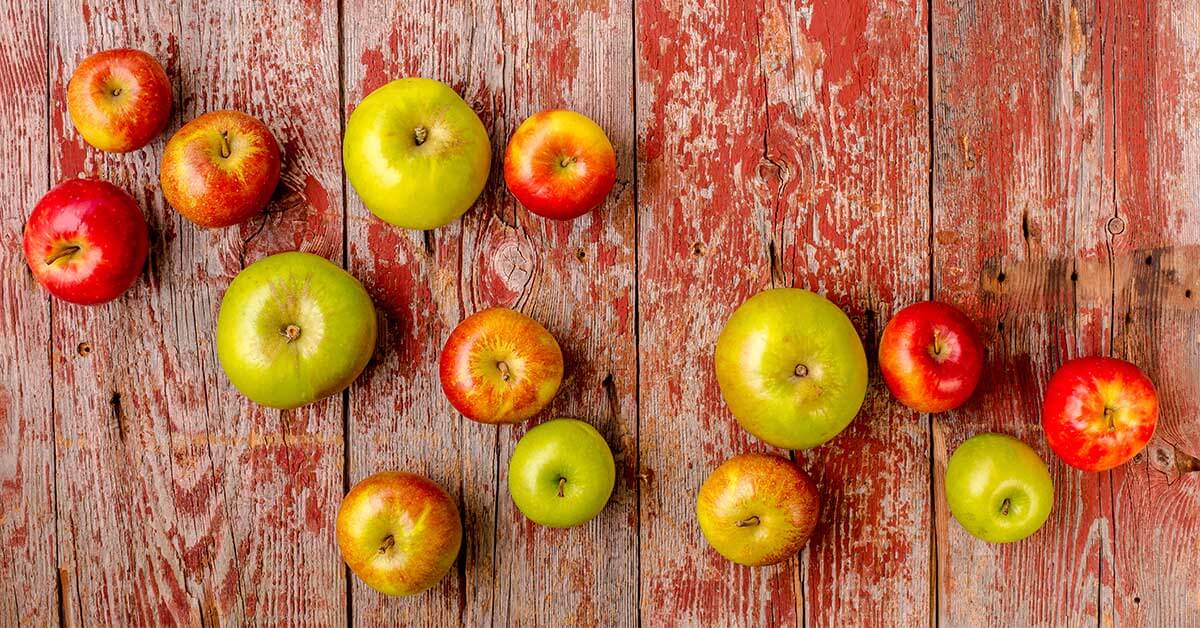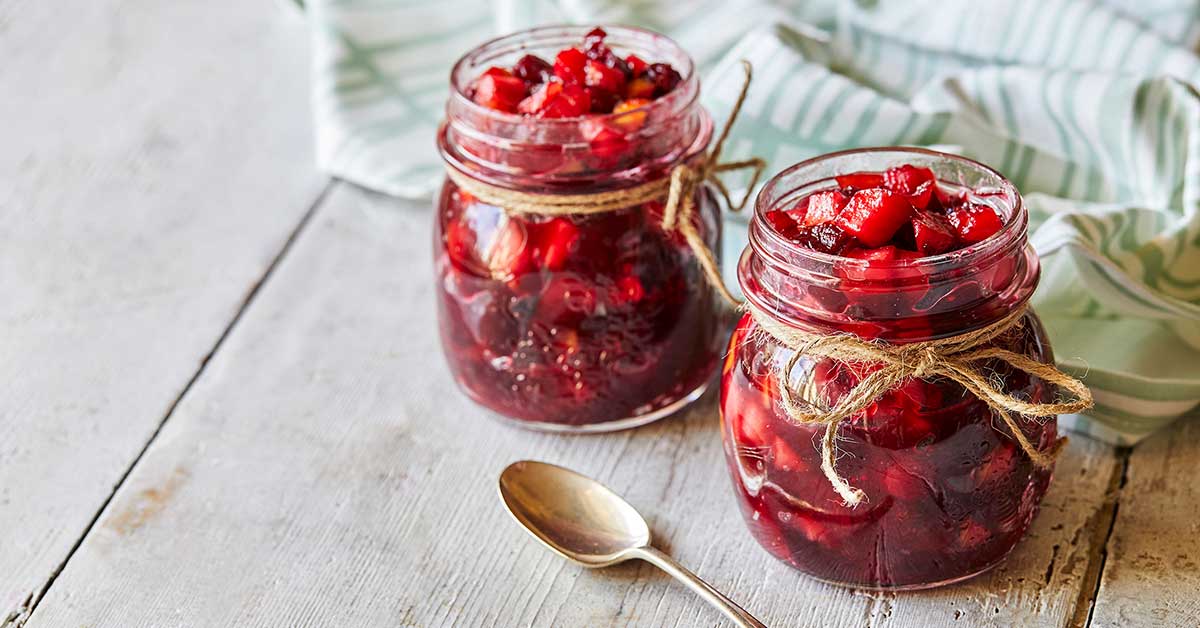-
Celebrating British Apples
13 September 2019An Unsung Hero of the British Orchard
This year, we introduced a new sustainability pledge which aims to shine a light on the unsung hero of the British orchard – delicious, seasonal apples. There are over 2,000 types of apples grown in the UK alone, all of which thrive in different environments. Apples are a great example of sustainable local produce. They grow over a 4–6-month period and come into season at different points throughout the year, meaning you can try a variety over the course of the year.
We have created a seasonal apple calendar that celebrates a different apple every month of the year. Alongside the calendar, our chef director Darren Deadman has developed recipes that explore the versatile nature of apples. From sweet to savoury, apples can be used to create an exciting range of different dishes throughout the year.
This September we have chosen the Early Windsor, which originates from Germany and was re-named in the UK in 1996. It has orange and red stripes that lie over a golden background. The Early Windsor is perfect for eating fresh due to its rich, aromatic and honey flavours, with a slightly sharper finish than a Cox. You can find the Early Windsor in our café’s and meeting rooms across our venues over September.
Below is a recipe for a delicious, autumnal apple and cranberry chutney, delicious with cheese and made using Early Windsor apples.

APPLE AND CRANBERRY CHUTNEY
Makes 1.75 litres
Prep time – 40-50 minutes
Cooking time – 55 minutes
Ingredients
1.75kg – Early Windsor eating apples (unprepared weight)
1 tbsp – lemon juice
650g – granulated sugar
175ml – white wine vinegar
175ml – red wine vinegar
175ml – apple cider vinegar
1 tbsp – mustard seeds
400g – onions – diced
350g – cranberriesMethod
1. Wash, peel, core and chop the apples then coat them with lemon juice in a bowl.
2. Mix all ingredients except the cranberries in a large, thick-bottomed pan. Bring to a simmer whilst stirring to dissolve the sugar
3. Continue to simmer for about 45 minutes without a lid and stirring occasionally to stop it sticking – by which time the chutney will have thickened and become shiny.
4. Add the cranberries and cook for a further 10 minutes or so until they have softened but not burst.
5. Spoon the chutney into sterilised jars and seal.
6. Store unopened in a cool, dark place. The chutney will keep for up to 6 months and will improve as it matures.

CLICK HERE FOR MORE APPLE RECIPES
SEARCYS SEASONAL APPLE CALENDAR UP TO SEPTEMBER
January – The Royal Gala
The Royal Gala apple, originally from New Zealand, is striped with an orange-red blush which exposes a white-yellow background. Their distinctive crunch bite, sweet flavour and low acidity level means they are a great addition to any salad.
February – Cox’s Orange Pippin
Cox’s Orange Pippin, a classic British apple, was first grown in Buckinghamshire in 1830 and thrives in the lower temperatures often seen in the UK. Coxes are considered one of the best dessert apples and are often used to make apple sauce.
March – Russets
Russets is a classic Victorian apple. The term ‘russet’ refers to the dull brown, rough finish on the skin of the apple, which some apple aficionados believe makes them the best-tasting variety. Their sweet and spicy flavour lends them to pairing well with cheese, as well as making excellent cider.
April – Braeburn
The Braeburn, over the last 70 years, has become one of the most commercially important apple varieties in the world as it is easy to grow and produces heavily. Braeburn is a very versatile apple and has obvious notes of nutmeg and cinnamon, which means it works well in both sweet and savoury cooking.
May – Golden Delicious
Golden Delicious apples are yellow and green in hue, and conical or oblong in shape. They are a sensitive variety which bruise easily, however they make delicious juice, and sit well in salads due to their balanced sweet-tart and aromatic flavour.
June – Royal Gala
The Royal Gala apple, originally from New Zealand, is striped with an orange-red blush which exposes a white-yellow background. Their distinctive crunchy bite, sweet flavour and low acidity level means they are a great addition to any salad.
July – Cox’s Orange Pippin
Cox’s Orange Pippin, a classic British apple, was first grown in Buckinghamshire in 1830 and thrives in the lower temperatures often seen in the UK. Coxes are considered one of the best dessert apples and are often used to make apple sauce.
August – The Discovery
The Discovery, a classic British apple, has a distinctive pink and red colouration which gives way to a green to yellow background with white flesh with an elegant pink-edge. The Discovery’s naturally sweet taste, combined with the hint of strawberry, means it is a perfect baking apple.
September – Early Windsor
The Early Windsor originally came from Germany and was re-named by the UK in 1996. It has orange and red stripes which lie over a golden background. The Early Windsor is perfect for eating fresh due to its rich, aromatic and honey flavour with a slightly sharper finish than the Cox’s.
October – Worcester
The Worcester originated in the 1870s and is grown on a small scale in the UK. They are smaller than your average apple and bright in colour where the sun as caught them. They benefit from being left on the tree as long as possible which makes them delicious eating apples, but they are also great stewed in dessert pies.
November – The Spartan
The Spartan is distinctive due to its deep-maroon colour and slightly flattened shape. They possess a sweet, refreshing and juicy taste, and some people pick up on a wine-like quality. The Spartan is considered a great after-dinner apple due to its cleansing properties.
December – Braeburn
The Braeburn, over the last 70 years, has become one of the most commercially important apple varieties in the world as it is easy to grow and produces heavily. Braeburn is a very versatile apple and has obvious notes of nutmeg and cinnamon, which means it works well in both sweet and savoury cooking.
- ABOUT SEARCYS
- Restaurants and Bars
- Event Venues
- EVENT SPACES
- All Locations
- {10-11} Carlton House Terrace
- 30 Euston Square
- 41 Portland Place
- 116 Pall Mall
- Barber-Surgeons Hall
- Battersea Power Station
- Carpenters’ Hall
- Church House
- Gray’s Inn
- Horizon 22
- IET London: Savoy Place
- National Army Museum
- No. 11 Cavendish Square
- One Moorgate Place
- Saddlers’ Hall
- Searcys at The Gherkin
- EVENT SPACES cont.
- Event Types
- SEARCYS IN THE CITY
- SEARCYS ROLLS-ROYCE
- Let Us Find Your Venue
- Event Catering
- What’s On
- Contact Us
- ABOUT SEARCYS
- Restaurants and Bars
- Event Venues
- EVENT SPACES
- All Locations
- {10-11} Carlton House Terrace
- 30 Euston Square
- 41 Portland Place
- 116 Pall Mall
- Barber-Surgeons Hall
- Battersea Power Station
- Carpenters’ Hall
- Church House
- Gray’s Inn
- Horizon 22
- IET London: Savoy Place
- National Army Museum
- No. 11 Cavendish Square
- One Moorgate Place
- Saddlers’ Hall
- Searcys at The Gherkin
- EVENT SPACES cont.
- Event Types
- SEARCYS IN THE CITY
- SEARCYS ROLLS-ROYCE
- Let Us Find Your Venue
- Event Catering
- What’s On
- Contact Us
Saved Venues0Stay Connected with Searcys
Sign up to receive updates on exclusive events, restaurant offers, and more from Searcys.
- Restaurants and Bars
- Restaurants and Bars
